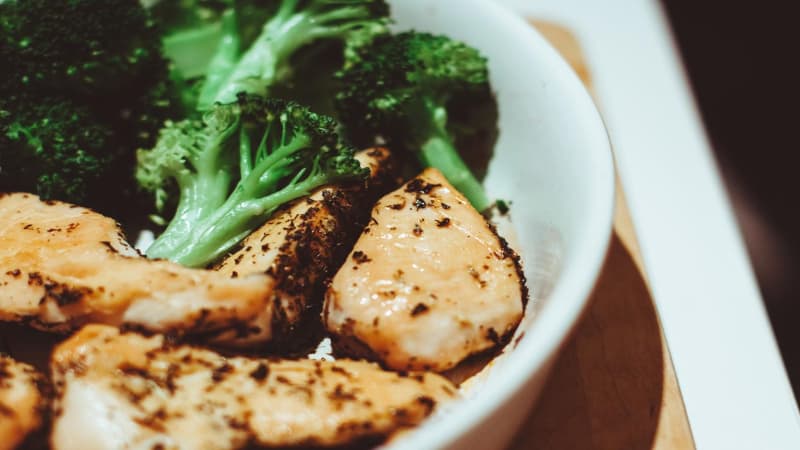When I think about snack time, rice crackers often come to mind. They’re light, crunchy, and seem like a healthier alternative to chips. But are they really a good choice? With so many snack options out there, I’ve found myself wondering if rice crackers are worth the hype or just another empty-calorie treat.
As I dive into the world of rice crackers, I’ll explore their nutritional value, potential health benefits, and how they fit into a balanced diet. Whether you’re a long-time fan or just curious about these crispy bites, let’s uncover whether they deserve a spot in our snacking routine.
Overview of Rice Crackers
Rice crackers are a popular snack made primarily from rice and seasoned in various ways. Many enjoy their crispy texture and light flavor, making them an appealing choice for those seeking a crunchy alternative to traditional chips. Rice crackers come in various shapes and sizes, often infused with ingredients like seaweed, sesame, or spices.
Nutrition-wise, rice crackers usually contain fewer calories than regular potato chips. For example, a standard serving of rice crackers contains about 120 calories, while a comparable serving of chips can have around 150 to 200 calories. This lower calorie count makes rice crackers an attractive option for individuals aiming to control their calorie intake.
When it comes to nutrients, rice crackers typically offer a simple ingredient profile. They’re low in fat and often gluten-free, appealing to those with dietary restrictions. However, they’re not particularly high in protein or fiber, which are essential for a balanced snack. It’s important to read labels, as some flavored varieties may contain added sugars or sodium, altering their overall health benefits.
Pairing rice crackers with nutritious toppings can elevate their status as a snack. Spreading hummus, guacamole, or almond butter on rice crackers adds healthy fats and proteins, creating a more balanced snack choice. Additionally, you can enjoy them with fresh veggies or lean meats for added flavor and nutrition.
Nutritional Value of Rice Crackers
Rice crackers offer a unique mix of flavors and textures, making them popular among snack lovers. Understanding their nutritional value helps me appreciate them as part of a healthy snacking routine.
Ingredients Breakdown
Rice crackers typically include rice as their primary ingredient, along with additives such as salt, spices, and sometimes sesame seeds. Simple ingredients create a light and airy snack. Some brands may incorporate additional flavorings, which can introduce ingredients like sugar or preservatives. It’s essential to read labels closely. I focus on options with fewer additives and whole ingredients to maximize nutritional benefits.
Caloric Content
Rice crackers are known for being lower in calories compared to traditional chips. A serving, usually around 30 grams, often contains about 100 calories. This makes them a suitable choice for those managing their caloric intake. The lightness of these crackers can provide a satisfying crunch without overwhelming calorie counts. However, pairing them with nutrient-dense toppings like hummus or avocado can enhance both their taste and nutritional value, promoting a balanced snacking experience.
Health Benefits of Rice Crackers
Rice crackers offer some notable health benefits, making them an appealing snack option. Their light texture and versatility can easily fit into a healthy eating plan.
Low in Fat
Rice crackers excel in being low in fat. A typical serving contains about 0.5 grams of total fat, making them a suitable choice for those keeping an eye on fat intake. This low-fat profile allows you to enjoy a satisfying crunch without worrying about excess calories from fats. Pairing rice crackers with healthy toppings enhances flavor while maintaining their light nature, keeping your snack guilt-free.
Gluten-Free Options
Many rice crackers are naturally gluten-free, catering to those with gluten sensitivities or celiac disease. This quality opens doors for a broader audience looking for snacks that align with their dietary needs. Being gluten-free also often means rice crackers contain fewer additives compared to traditional snacks. Always check the packaging to ensure you’re choosing a truly gluten-free variety, as some brands may include additional ingredients that aren’t suitable for gluten-free diets. This makes rice crackers an excellent choice for anyone seeking tasty and safe snacking alternatives.
Potential Downsides of Rice Crackers
While rice crackers can be a delightful snack, they come with some downsides worth considering.
High in Sodium
Many flavored rice crackers pack a high sodium content. A typical serving can contain up to 200 milligrams or more, which is a significant portion of the daily recommended intake. Excessive sodium can lead to health issues such as high blood pressure and heart disease. Always check labels to find options with lower sodium levels, or opt for plain varieties and season them yourself.
Limited Nutritional Diversity
Rice crackers tend to lack a diverse range of essential nutrients. They often provide minimal protein and fiber, making them less filling. A standard serving may contain less than 1 gram of protein and fiber, which means they don’t support long-lasting energy or satiety. Incorporating them with nutrient-rich toppings like nut butter or avocado can help enhance their nutritional profile, turning them into a more balanced snack choice.
Conclusion
Rice crackers can definitely be a fun and light snack option if you’re looking for something crunchy. They’re low in calories and fat which is great for those mindful of their intake. I love how versatile they are and how easily they can fit into different diets.
However it’s important to be aware of the sodium content and to choose wisely among the various flavors out there. Pairing them with healthy toppings can really elevate their nutritional value and make them more satisfying. So if you’re a fan or just curious I’d say give rice crackers a try and see how they fit into your snacking routine.
















